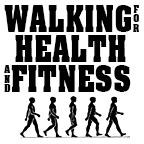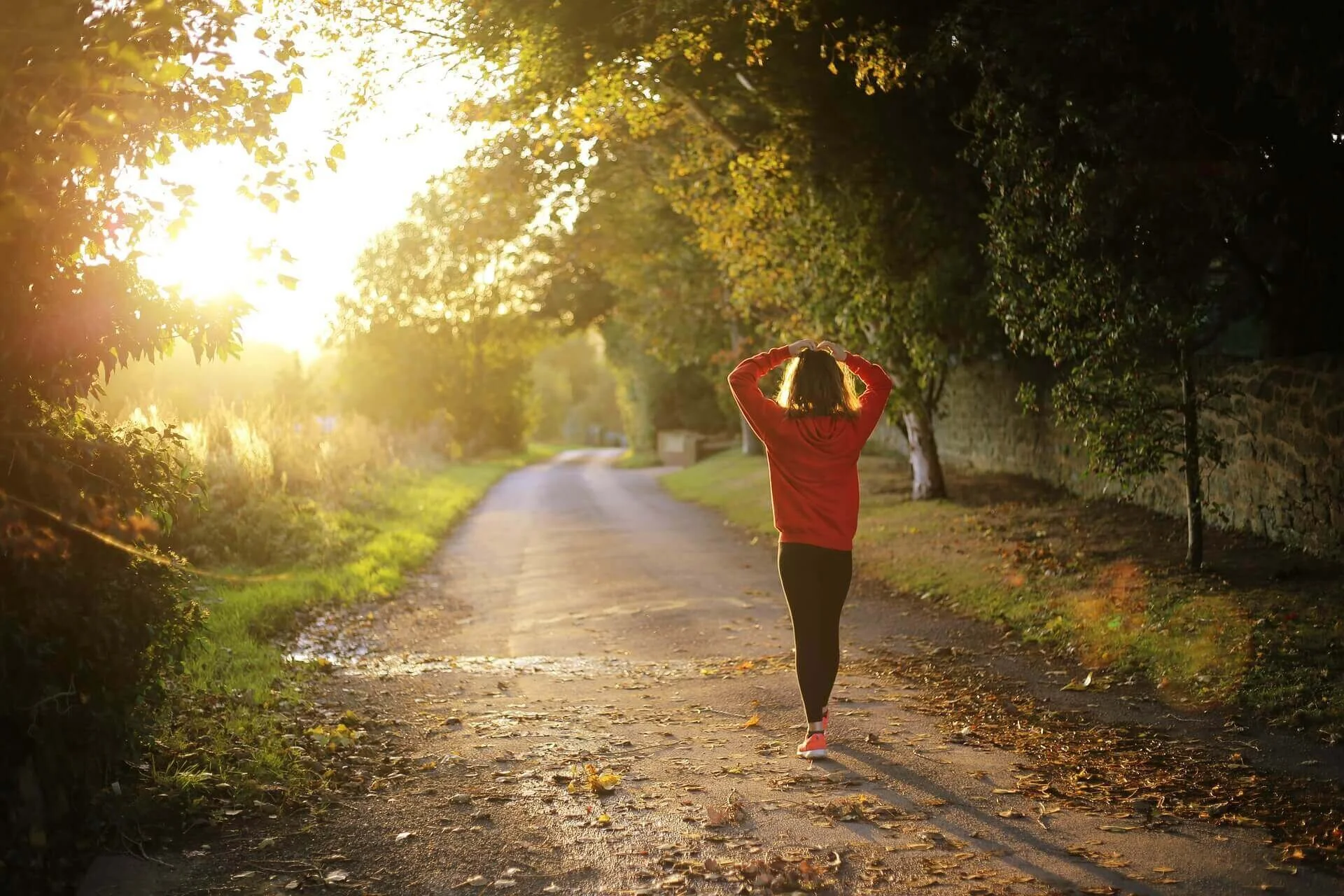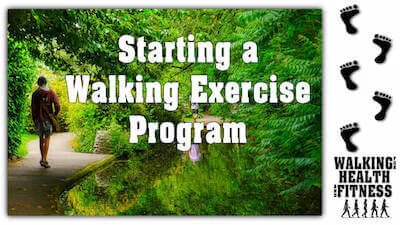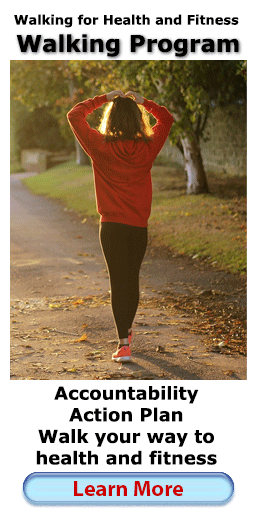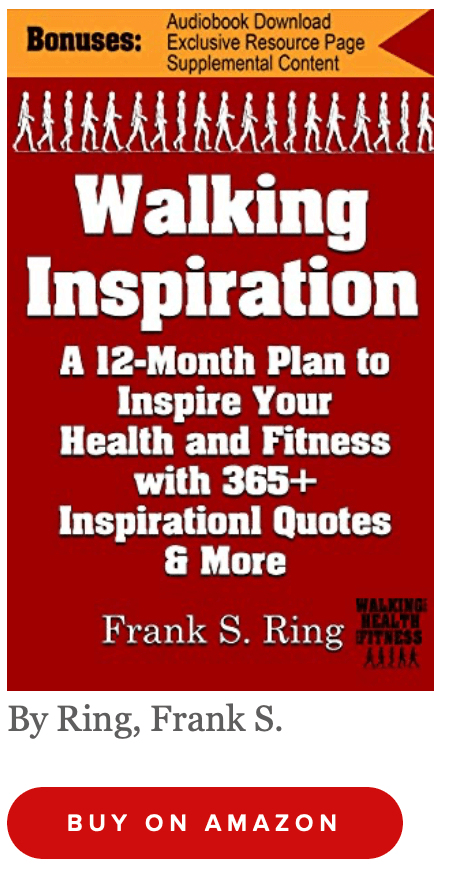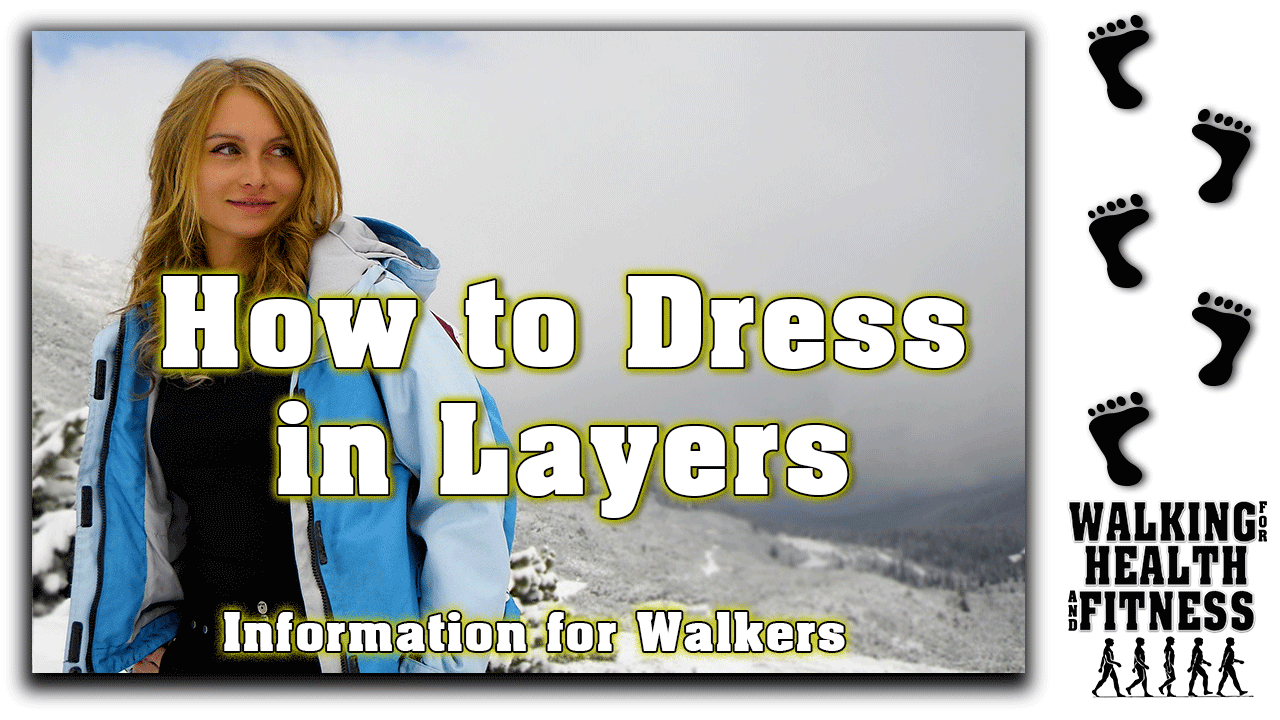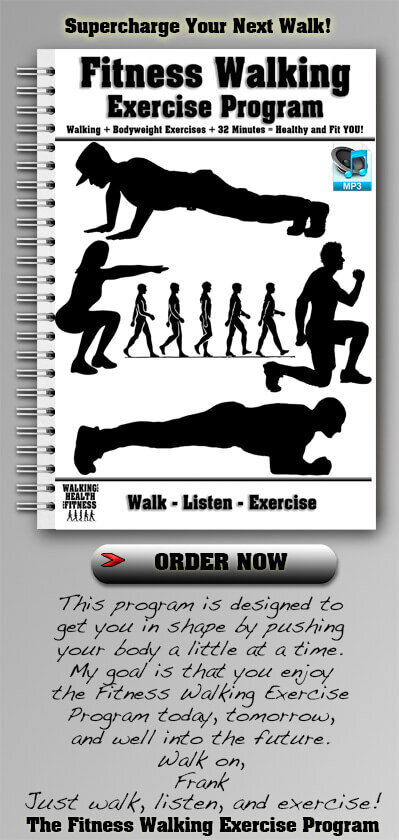Starting a Walking Exercise Program
I have good news for you: good health and fitness just became easy
I promise you that a month from now, you will feel better than you do today! There are many ways to get yourself in shape, but walking will give you the most “bang for the buck”!
Picture this: You just stepped into your home; a healthy glow lights up your face as you’ve just walked for 30 minutes straight. The scent of the crisp fresh morning air follows you into your living room. You feel reinvigorated and more alive than you have in years; Who knew walking could have such a powerful impact on your life?
Walking is gentle on the body and soothing to the mind. Walking allows you to experience the physical sensation of movement and the mind-expanding feeling that comes through physical activity.
Starting a walking exercise program is your first step on the road to health and fitness.
Why the Sedentary Lifestyle is Dangerous
By definition, the sedentary lifestyle is characterized by spending the majority of your time sitting or lying down with little or no exercise. Some experts consider this as dangerous as smoking.
We sit when we eat breakfast, sit for the morning commute, most of us sit at a desk all day, sit for lunch, sit for the evening commute, sit for dinner, sit for television or computer time. Then, we end our day by lying down and sleeping for 6 to 8 hours every evening.
What You Can Do to Improve Your Health and Fitness
Walking is by far the easiest and most effective way to take care of your health. A daily 30-minute walk will improve your cardiovascular health, reduce excess body fat, strengthen bones, and enhance muscle performance!
The doctor glances at your medical chart; he looks up at you, then quickly back to the chart. “How can this be? I don’t know what you’re doing but the results are amazing. Let’s cut your blood pressure medication in half and retest you in 6 months!”
For people who may be predisposed to certain health conditions, walking can reduce the risk of heart disease, cancer, diabetes, arthritis, osteoporosis, back issues, Alzheimer’s disease, and other dementias.
Walking is also an antidote for being overweight and obese. These conditions are known to increase blood pressure, and high blood pressure is the leading cause of strokes.
Excess weight also increases your chances of developing other problems linked to strokes, including high cholesterol, high blood sugar, and heart disease.
Obesity is one of the biggest drivers of preventable chronic diseases and healthcare costs in the United States. Currently, estimates for these costs range from $147 billion to nearly $210 billion per year.
In addition, obesity is associated with job absenteeism, costing approximately $4.3 billion annually. Obesity causes lower productivity while at work, costing employers $506 per obese worker per year.
Benefits of Walking
Why am I so enthusiastic about walking? Well, I’ll give you 3 reasons:
Walking is free,
Walking is easy to do, and
Walking is easy on your body’s muscles, joints, and bones!
There’s no question that walking is good for you. Walking is an aerobic exercise, which stimulates and strengthens the heart and lungs, thereby improving the body’s utilization of oxygen.
It also lowers the risk of blood clots as the calf acts as a venous pump, contracting and pumping blood from the feet and legs back to the heart, reducing the load on the heart.
Read: 11 Reasons to Love Walking
Walking Helps Improve Back Pain
Walking is a much lower impact activity than running. Most back pain is relieved with walking and you can enjoy other great benefits as well. By adopting a regular walking routine, you will strengthen your hips, legs, ankles, and feet, as well as your core.
This helps to provide better stability for your spine. It also helps to increase circulation in the spinal structures, draining toxins, and pumping nutrients into the surrounding soft tissues. Read and get your FREE download: How to Walk Away From Back Pain
Walking Prevents Heart Disease
Exercise also increases your lungs' ability to take in oxygen, lowers blood pressure, helps to reduce body fat, and improves blood sugar and cholesterol levels.
Walking Prevents Cancer
Exercise has a number of biological effects on the body, some of which have been proposed to explain associations with specific cancers, including lowering the levels of hormones, such as insulin and estrogen, and of certain growth factors that have been associated with cancer development and progression.
Walking Prevents Obesity
Walking helps to prevent obesity and decrease the harmful effects of obesity, particularly the development of insulin resistance (failure of the body's cells to respond to insulin) by reducing inflammation and improving immune system function
Walking Prevents Diabetes
One possible reason why: when you perform a moderate exercise—like walking three miles—your body taps into its stores of fatty acids to fuel it more than it does when you exercise vigorously, like if you jogged the same distance. That’s good news for your diabetes risk as an elevated level of free fatty acids can make it harder for your body to process the hormone insulin.
Walking Improves Circulation
It also wards off heart disease, brings up the heart rate, lowers blood pressure, and strengthens the heart.
Walking Stops the Loss of Bone Mass
Walking can stop the loss of bone mass for those with osteoporosis.
Walking Lightens the Mood
Walking releases natural pain-killing endorphins to the body– one of the emotional benefits of exercise.
Walking Leads to Weight Loss
A quick 30-minute walk burns 200 calories. Over time, calories burned can lead to pounds dropped.
Walking Strengthens Muscles
Walking tones your leg and abdominal muscles– and even arm muscles-- if you pump them as you walk.
Walking Improves Sleep
A study from the Fred Hutchinson Cancer Research Center in Seattle found that women, ages 50 to 75, who took one-hour morning walks, were more likely to relieve insomnia than women who didn’t walk.
Walking Supports Your Joints
The majority of joint cartilage has no direct blood supply. It gets its nutrition from the synovial or joint fluid that circulates as we move. If you don’t walk, joints are deprived of life-giving fluid, which can speed deterioration.
Walking Improves Your Breath
When walking, your breathing rate increases, causing oxygen to travel faster through the bloodstream, helping to eliminate waste products and improve your energy level and the ability to heal.
Read my original blog post on Walking for Health and Fitness
Walking Slows Mental Decline
A study of 6,000 women, ages 65 and older, performed by researchers at the University of California, San Francisco, found that age-related memory decline was lower in those who walked more.
Walking Lowers Alzheimer’s Risk
A study from the University of Virginia Health System in Charlottesville found that men between the ages of 71 and 93 who walked more than a quarter of a mile per day had half the incidence of dementia and Alzheimer’s disease, compared to those who walked less.
Walking Helps You Do More, Longer
Aerobic walking and resistance exercise programs may reduce the incidence of disability in the daily activities of people who are older than 65 and have Symptomatic Osteoarthritis, shows a study published in the Journal of Clinical Outcomes Management.
Walking Leads to a Longer Life
Research out of the University of Michigan Medical School and the Veterans Administration Ann Arbor Healthcare System says those who exercise regularly in their fifties and sixties are 35 percent less likely to die over the next eight years than their non-walking counterparts. That number shoots up to 45 percent less likely for those who have underlying health conditions.
An Investment in Yourself!
Doctor’s visits, prescriptions, lost time at work, and the lessened quality of life due to preventable illness all add up to a significant sum of time and money.
As you go through this program, look at your time and effort as an investment in yourself. Let me repeat that: As you go through this program, look at your time and effort as an investment in yourself.
What could be better than that? Your health, happiness, and life depend on it!
>> Learn more about Frank’s soon to be release complete Walking Program
Basic Walking Gear
Walking requires little more than good footwear--walking shoes or sneakers, some comfortable clothes, socks, and… that’s it!
Footwear
To get started quickly, you just need a comfortable pair of sneakers! With that said, going forward as your walking increases, an investment in walking shoes will enhance the walking experience.
Just to be clear, you don’t need any special walking shoes to start! Just wear a pair of sneakers that are comfortable.
The main goal at this point is to just get moving.
Why Walking Shoes?
Let's take a look at walking and running and the body mechanics involved with each.
As you walk, the body's weight is distributed more evenly on the foot than when you run.
When walking, your weight rolls from the heel through the ball and continues to the toe in one foot after the other. This gentler, rocking chair-like motion requires your feet to absorb the shock of only 1-2x your body weight with each step. And, during walking there are points where both feet are firmly on the ground, dividing weight.
With each walking step, the outer heel absorbs most of the impact before distributing weight through the foot in an S motion through the push-off from the toe.
In contrast, running requires the support of at least 2-3x your body weight, and each stride has moments with neither foot on the ground. Runners spend a good deal of time “in the air” literally. What goes up must come down! It is this constant landing that pounds and puts a tremendous amount of stress on the body over time, causing it to break down!
So What's This Mean To Your Shoes?
Basically, it's the old axiom of having the right tool for the job. Walking shoes are designed with the specific body mechanics and strike path of walking in mind.
They are constructed to be more flexible through the ball of the foot to allow a greater range of motion through the “roll” of the forefoot. They also have greater arch support to protect where the force is heaviest on the foot.
Running shoes, in contrast, have more cushioning in the heel–the point of impact–and less protection through the ball of the foot.
The amount of heat generated in the running motion is greater, so running shoes also are made with a higher amount of mesh to keep feet cool during exercise.
Picking the proper shoes can prevent discomfort, injury, and will encourage you to maintain an active lifestyle.
It is most important that your shoes feel comfortable so that you do not avoid exercising.
In my Book Walking for Health and Fitness, there is a complete section on how to buy walking shoes.
Socks
A good pair of socks will absorb sweat and prevent friction between your feet and the inside of the shoe.
Test out several pairs, you want thick but not too thick. Synthetic materials like polyester, acrylic, and nylon are your best bet because they help wick away moisture and prevent blisters.
Make sure they don’t bunch around the toes or gather at the heels, which can cause blisters and hot spots.
Clothing
Many pleasure walkers walk in regular clothes and this works just fine. Comfortable, nonrestrictive clothing works best!
Dress For the Weather
This is your major concern when dressing for walking. Being comfortable will keep you walking.
Dressing For Warm Weather
Light loose top
Shorts or short tights
Synthetic clothing (helps moisture escape and evaporate to make you more comfortable)
Hat, sunglasses, and sunscreen
Dressing for Cool Weather
Upper body--dress in layers
3 layers work better on the upper part of your body.
Each layer acts as an insulator and traps body heat.
I wear a thin synthetic layer followed by a heavier long-sleeve shirt then an outer layer which is usually a windbreaker type of jacket or a lined jacket if it’s really cold (less than 30 degrees).
Watch: How to Dress in Layers
Bottoms
1 layer is generally all you need.
I usually wear a sweat-pant type of bottom.
Accessories
Hat
Gloves or mittens (mittens keep your hands warmer)
A scarf or some other type of garment to keep the wind off your neck. I use a bandana as a scarf.
Sunglasses on bright days and days when snow is on the ground.
Any type of reflective gear is good to wear any time of day. The more visible you are, the safer you will be (more safety tips in a later chapter).
Dressing Rule of Thumb
Dress for 10 degrees warmer than the outdoor temperature. Your body will warm up as you walk and you don’t want to overheat.
Carryalls
Fanny pack with water bottle holder. These are very comfortable and allow your arms and hands to swing freely.
Water: always carry water, even on cool days.
Keys
Phone
Money
Identification
Emergency contact information
Reflective Gear
Reflective gear and a good flashlight/headlamp is a must when walking in the dark!
Getting Out the Door
Many athletes, even professionals, say that the hardest part of training is just out the door and starting their work-out!
Being organized is beneficial to any fitness routine. The less you have to think about, the more you can focus on the workout ahead.
Walking is an easy sport to prepare for, and having this checklist will save you time and effort as you prepare for your walk!
Over time, getting out the door will be automatic, but a reminder of what to bring along with you is always helpful!
Your Next Step:
Sign up to get our Free Publications: “Get Out the Door” a checklist to get your walking exercise program started, and “Walking Inspiration”, our exclusive quarterly newsletter.
Starting a Walking Exercise Program:
Starting a walking exercise program is as easy as putting one foot in front of the other. Start slowly and gradually work up to increasing the distance you walk. As a beginner, aim for a certain amount of time, then set your watch and go. Enjoy the walking journey, it’s well worth the effort.
The Warm-Up
Doing a Warm Up before you Walk is easy and takes less than 5 minutes. My book Walking for Health and Fitness has an efficient and effective warm-up routine.
Most Athletes Biggest Mistake: Stretching Cold Muscles. You will stretch after your walk.
The Walk
You can walk almost anywhere! The important thing is that you walk.
Some suggestions on where you can walk:
Your neighborhood: you know the terrain and the people. And by walking you will get to know more people! I’ve met many new friends just by walking the same routes over the past few years.
A local park with a walking path
A School track: this is a great option as you have a stable flat surface, and you can walk up the bleacher steps to get your heart rate up.
Read: 21 Walking Safety Tips
The Cooldown
Your muscles have been used and now need to slowly cool down by following a similar routine to the warm-up.
You will end by gently stretching your muscles. More details are available in my Walking for Health and Fitness book.
IMPORTANT: The 10-minute time test:
Walking speed* is a powerful indicator of vitality: Walking speed studies shows that an older person’s pace, along with their age and gender, can predict their life expectancy just as well as the complex battery of other health indicators, such as blood pressure, body mass index, chronic conditions, and smoking history.
How to do a 10-minute Walking time test
Begin your stopwatch (most smartphones have one) and walk your normal pace for 10 minutes.
Record how far you have walked.
This is your baseline number.
Every 2 weeks repeat this process to see how far you can walk in 10 minutes.
By tracking your walking speed, you will be more aware of hidden health problems if you suddenly start to slow down your pace.
If you feel well, yet you’ve slowed down, then there may be an underlying problem.
The quicker you get it resolved, the less time-consuming and expensive the treatment will be.
Keep Track of Your Progress
Recording your walks in journal, fitness log, spreadsheet, or by using an app such as Strava is a great way to stay motivated and keep you putting on foot in front of the other.
I used physical roadmaps to mark my progress as I recorded my running, then walking mileage in an attempt to walk around the perimeter of the United States.
Read my blog post about my 16-year odyssey in a previous post.
Now you have some great information on getting out the door and starting a walking program.
Don’t wait until tomorrow, start right now!
Walk on,
Frank S. Ring
Author: Walking for Health and Fitness, Fitness Walking and Bodyweight Exercises, and Walking Inspiration.
